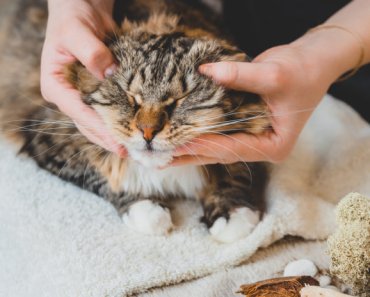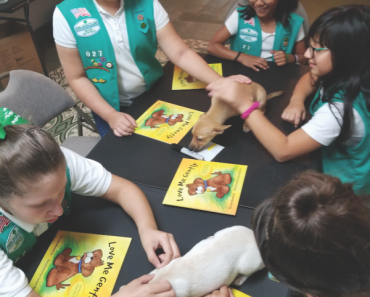
For original article click here

Photo by VisionPic .net from Pexels
Teaching our children to have great interactions with their pets is a big responsibility for a parent.
It forms the foundation of a lifelong relationship with the animals that interact with us on a daily basis. It also helps ensure the safety of both the animals involved and your kids.
It’s not as hard as you’d think, either. Read on and we’ll get into some easy ways to make sure that your children are able to enjoy positive interactions with the pets around your home.
1. Know Your Pet’s Personality
Knowing your pet’s habit and temper is the key to making sure that your kids and animals get along. Some animals can be surprisingly tolerant of younger children, others may get aggressive if they’re subjected to rough patting or tail pulling. Others may be too boisterous, knocking over toddlers even if they mean no harm.
The personality of your pet needs to be well understood before you can have any real success. Cats, in particular, may simply need to be kept from the unsupervised presence of curious toddlers.
Few pets, particularly cats and dogs, will react in an overly negative manner to children. Those that may require special measures and you may end up needing to rehome the pet depending on the magnitude of their problems.
2. Train Your Animals
Any animal which is being introduced to a younger child should have been properly socialized and trained. Dogs, especially, can be a bit intimidating for kids if they’re not brought up to be around people. Some breeds will naturally take to children, which is a big bonus.
Any dog which is brought around young children needs, at the very least, obedience training and basic socialization.
3. Make a Proper Introduction
You’ll want to properly introduce your children and animals to make sure they’re successful at getting along. When you bring a new pet home you need to lay down the ground rules for your child and make sure that the animal is aware this is an important member of the family.
Take the time to get them acquainted and see how they interact initially. This will allow you to set the proper groundwork for their relationship in the future. Cats, for instance, may not take to children but will almost always retreat or stay out of reach. Dogs will generally be quite happy with “their” little people and their predictability and training can make things much smoother in most interactions.
4. Teach Your Child Animal Body Language
You don’t need to teach your child to be an expert, but the basics of pet body language are necessary for any kid old enough to understand them. Helping your child communicate with your pets will avoid misunderstandings between them.
Most of the obvious ones to adults may not be so obvious to a child. For instance, if a dog takes a lower stance it may be ready to play or it may be getting defensive… that depends on whether or not their tail is wagging. Likewise, the swishing of a cat’s tail in agitation is a good indicator that Fluffy isn’t up to keep playing at this point in time.
5. Allow Animals Their Space
Your animals should always have an avenue of escape from your child. A cornered pet is one that may scare your child with a scratch or nip instead of being able to pull back.
Dogs, for instance, can be crate trained. Make it clear to your kid that the crate is your dog’s space so that your pup can get away when they need to. When you’re not observing playtime you’ll also want to keep them segregated from younger children, a good dog gate is always an option.
Cats will usually retreat on their own. Few are overly aggressive and if they tire of their tail getting yanked or being petted to roughly they’ll find a way to climb out of reach. Cat trees and other “safe” high places are a must.
6. Give Your Kids Responsibilities
When you’re raising children and have pets, you should also have the child take care of them. While the kids need to be old enough to understand the gravity of it, there’s a lot of potentially positive interactions that occur when a pet is fed, watered, or even groomed by children.
In addition to it taking some of the problems out of your hands, it also creates a bond between them.
Make sure they stay on top of it, of course, as your pets are reliant on you for food, shelter, water, and all of their other needs. But once the process has begun it truly helps both of them to understand that both animal and child are part of the family.
That last point is particularly true if you had the pet before the child. Once everyone understands they’re part of the same family unit things will go much more smoothly.
7. Avoid Rough Play
Small children are more likely than older ones to get a bit rough with animals. While many dogs and cats will easily take it, or just move away from the kid entirely, some may get alarmed. An animal that feels cornered and threatened can be a danger.
Instead, what you should do is teach them from the start to avoid getting rough. That doesn’t just mean bopping or vigorous petting, many seemingly affectionate behaviors can put animals on guard. Hugging, for instance, isn’t something that most animals take readily to and can make them feel threatened quickly.
You should also teach your children to avoid yelling or running around your pets. While the animal may enjoy a bit of boisterous play even a medium-sized dog can quickly become too much for a kid to handle on their own. When they get a bit older they can get into it but until then it’s best to have them calm around the animals.
8. Supervision is Key
For younger children, it’s always inadvisable to allow them to play with your pets without supervision. You’ll need to be able to correct any errant behavior on either the pet or the child’s part.
Consider it an extra bonding experience.
Use Common Sense and Have a Great Time
The truth is that most of our little people will quickly acclimate to being around animals. Humans have been surrounded by them since the beginning and most of us have a fondness for our furred friends. Using common sense and the above guidelines will help your child to interact positively and safely with your pets and forge the beginnings of a great relationship.
There’s no need to be scared about it, just use a little bit of caution and all will be well within the home.
Author: Emily Green



























